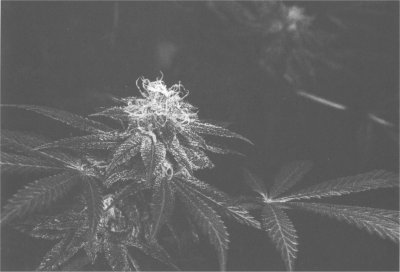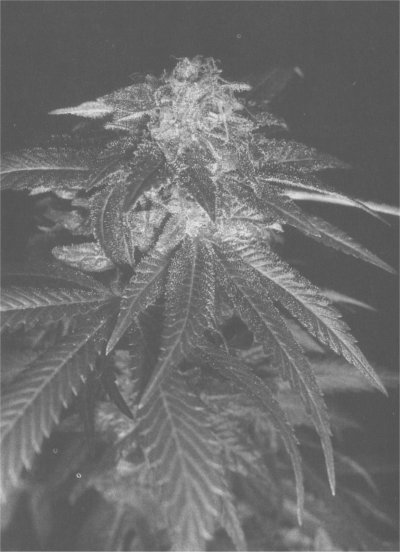Chapter Thirteen
Easy Organics
Organic indoor gardeners must choose between two growing methods: using either a hydroponic medium or a planting mix. Hydroponic gardeners use a medium such as clay pellets, foam rubber or spun rock, all of which are virtually nutrient-free, and add nutrients by using water-soluble fertilizers. Planting mixes can also be fed with water, but quite often they are composed of nutrient-rich ingredients. Each growing method has its advantages and disadvantages.
Gardens grown using planting mixes are more forgiving, because the ingredients and micro-organisms they host buffer the plants in extreme conditions. They are also generally easier to get started than hydroponic gardens and do not require a large investment of time or money. The hydroponic method, on the other hand, offers automated care, higher yield and faster growth.
The hydroponic method is particularly advantageous in large systems, where handwork can be very time-consuming. In smaller gardens, where hand-watering takes only a few minutes, automated systems may not save time, but they will eliminate the need for the gardener to be continuously on hand to water the plants.
The other advantage of hydroponics—higher yield—is alluring to the ganja-growing hobbyist. Hydroponic gardens are more finicky and react more intensely to change, like the Porsche as compared to the Toyota mentality of planting mixes. Planting-mix gardens are the way to go for growers who do not wish to become garden experts, but would like to grow an ample harvest of good bud.
Setting up the planting mix garden seen here is quite easy. if seeds are being used, each is planted in a single 2 inch to 4 inch container. After a few weeks of growth, a branch is clipped from each one and marked. The clipped branches are kept in a jar with water and a few drops of houseplant fertilizer, then placed under a regimen of 10 hours of light and 14 hours of uninterrupted darkness. Within 7 to 10 days the plants will grow flowers, indicating whether they and their clone mothers are male or female. Remove and destroy the male plants.
Gardens grown using planting mixes are more forgiving, because the ingredients and micro-organisms they host buffer the plants in extreme conditions. They are also generally easier to get started than hydroponic gardens and do not require a large investment of time or money. The hydroponic method, on the other hand, offers automated care, higher yield and faster growth.
The hydroponic method is particularly advantageous in large systems, where handwork can be very time-consuming. In smaller gardens, where hand-watering takes only a few minutes, automated systems may not save time, but they will eliminate the need for the gardener to be continuously on hand to water the plants.
The other advantage of hydroponics—higher yield—is alluring to the ganja-growing hobbyist. Hydroponic gardens are more finicky and react more intensely to change, like the Porsche as compared to the Toyota mentality of planting mixes. Planting-mix gardens are the way to go for growers who do not wish to become garden experts, but would like to grow an ample harvest of good bud.
Setting up the planting mix garden seen here is quite easy. if seeds are being used, each is planted in a single 2 inch to 4 inch container. After a few weeks of growth, a branch is clipped from each one and marked. The clipped branches are kept in a jar with water and a few drops of houseplant fertilizer, then placed under a regimen of 10 hours of light and 14 hours of uninterrupted darkness. Within 7 to 10 days the plants will grow flowers, indicating whether they and their clone mothers are male or female. Remove and destroy the male plants.


